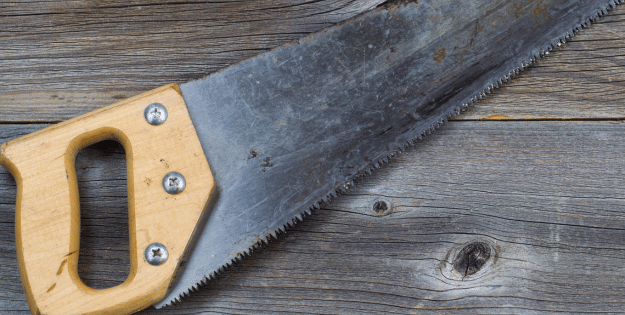When it comes to choosing the best hand saw, understanding the variety available is crucial. Hand saws are indispensable tools for both professionals and DIY enthusiasts, designed primarily for wood cutting but also capable of tackling materials like plastics and metals. Unlike backsaws, hand saws offer flexibility with their non-stiffened blades, making them versatile for different cutting tasks.
Selecting the right hand saw can significantly impact the quality and efficiency of your work. While some saws are built for speed and coarse cuts, others are crafted for precision and fine finishes. A well-chosen saw should strike a balance between comfort and durability, allowing for prolonged use without frequent replacements.
Top Amazon Sellers
Key Takeaways
- Understand the variety: Hand saws are versatile tools available in different types tailored for specific tasks, such as crosscut, rip-cut, coping saws, and more.
- Blade considerations: Factors like blade length, material, and teeth per inch (TPI) significantly impact cutting capacity, durability, and finish quality.
- Ergonomics matter: Choose hand saws with ergonomically designed handles to minimise fatigue and enhance control, especially for prolonged usage.
- Performance insights: Assessing cutting efficiency, accuracy, and durability helps in selecting the best hand saw for specific woodworking projects.
- Top-rated recommendations: Explore diverse options ranging from high-quality professional saws to budget-friendly and multi-functional choices for varied needs.
What to Consider When Choosing the Best Hand Saw
Selecting the best hand saw involves considering several factors to ensure it meets your needs.
Types of Hand Saws
Hand saws come in different types tailored for specific tasks. Consider crosscut for precise wood cutting or rip-cut for cutting along the grain. Each type offers distinct advantages, ideal for tasks ranging from construction to intricate woodwork.
Blade Length and Material
Blade length impacts cutting capacity, with longer blades suited for larger materials. Blade material, often hardened steel, affects durability and sharpness. Quality material ensures the saw remains effective with prolonged use, making it crucial in selecting the best hand saws.
Teeth per Inch (TPI)
TPI directly influences cutting performance and finish quality. Low TPI (1-7) offers faster but rougher cuts, ideal for coarse tasks. High TPI (10+) provides smooth finishes, requiring more effort. Evaluate based on the desired balance between speed and finish.
Saw Handle Design
Ergonomically designed handles minimise fatigue, enabling extended use. Comfortable grips with quality materials reduce strain, especially during long tasks. Handle design affects control and accuracy, pivotal in choosing the best hand saws for extended projects.
Popular Types of Hand Saws
Understanding different hand saw types helps in selecting the best hand saws for various tasks. Each type offers distinct features tailored to specific cutting needs.
Rip Saws
Rip saws are ideal for cutting wood along the grain. Their large teeth and few teeth per inch facilitate fast, aggressive cuts. Best hand saws for ripping have a long blade, making them efficient for reducing large pieces of lumber.
Crosscut Saws
Crosscut saws excel in cutting wood across the grain with precision. They feature medium-sized teeth designed for clean, accurate cuts. These best hand saws offer a balanced approach to both speed and finish quality, suitable for general carpentry.
Coping Saws
Coping saws are designed for intricate cuts, often used in fine woodworking. Their thin blades and fine teeth allow for detailed, precise cuts, ideal for curved patterns and joinery. They are most effective where accuracy and control are paramount.
Bow Saws
Bow saws deliver fast, efficient cuts, particularly useful for cutting branches and logs outdoors. They feature a large frame with coarse teeth, making them ideal for quick, rough tasks. Best hand saws in this category provide robustness in rustic environments.
Japanese Pull Saws
Japanese pull saws offer a unique cutting action, working on the pull stroke. They feature thin, flexible blades with fine teeth for smooth cross-cuts. These saws provide precision and ease, making them a popular choice for detailed woodworking projects.
Top Hand Saw Recommendations
Finding the best hand saws involves assessing performance, comfort, and versatility. Here are top picks for various needs.
High-Quality Options
For those valuing precision and durability, high-quality hand saws offer excellent blade strength and fine teeth suitable for clean cuts. They ensure long-lasting use and are perfect for professional tasks requiring meticulous workmanship.
Budget-Friendly Choices
Cost-effective hand saws maintain a balance between performance and affordability. They feature durable materials and effective cutting performance without the premium price, making them ideal for occasional use or DIY projects.
Multi-Functional Saws
Versatile hand saws provide adaptability across different materials, including wood, plastic, and metal. These saws come with interchangeable blades and ergonomic handles to suit various tasks, offering both flexibility and convenience for diverse cutting jobs.
Conclusion and Top Picks
Choosing the right hand saw can significantly enhance the quality and efficiency of any woodworking or DIY project. With various types available, each designed for specific tasks, it’s crucial to consider factors such as blade length, material, and teeth per inch. Equally important is the ergonomic design of the handle, which can reduce fatigue and improve control. The guide provided in the article offers a comprehensive review of top-rated hand saws, catering to both professional and occasional users. By understanding these elements and evaluating performance and durability, users can confidently select a hand saw that meets their specific needs and preferences.
Frequently Asked Questions
What are the most common types of hand saws?
The most common types of hand saws include rip saws, crosscut saws, coping saws, bow saws, and Japanese pull saws. Rip saws are ideal for cutting along the wood grain, while crosscut saws are used for cutting across the grain. Coping saws are perfect for intricate cuts, bow saws are useful for quick, rough cuts outdoors, and Japanese pull saws are renowned for precision detailed work.
How do I choose the right hand saw for my needs?
To choose the right hand saw, consider the material you will be cutting and whether you need precision or speed. Look at the teeth per inch (TPI) for cut quality—lower TPI for faster, rough cuts and higher TPI for smoother finishes. Blade length and material influence durability, and ergonomic handles will enhance comfort during extended use.
Why is blade length important in hand saws?
Blade length in hand saws determines the size of the material you can cut effectively. Longer blades are suitable for larger materials, offering more reach and stability, while shorter blades provide better control for detailed tasks. The right blade length ensures maximum efficiency and precision in your cutting tasks.
What makes Japanese pull saws different from Western saws?
Japanese pull saws differ from Western saws in their design and cutting action. They cut on the pull stroke, allowing for thinner, more flexible blades with sharper teeth. This results in cleaner, more accurate cuts with less effort, making them highly effective for woodworking projects that require precision.
How does teeth per inch (TPI) affect cutting performance?
Teeth per inch (TPI) significantly impact the cutting performance of a hand saw. Lower TPI provides faster, rougher cuts suitable for quick tasks, while higher TPI offers smoother, cleaner finishes ideal for precision work. Selecting the right TPI depends on the material and the desired finish of the cut.
Why is an ergonomic handle important in a hand saw?
An ergonomic handle is crucial for reducing fatigue and increasing control during prolonged use. It ensures a comfortable grip, which is important for accuracy and safety. An ergonomic design enhances maneuverability, allowing for precise cuts and reducing the risk of strain or injury.
What maintenance is required for hand saws?
To maintain hand saws, keep blades sharp and clean to extend their lifespan. Regularly check for rust and apply oil to prevent corrosion. Store hand saws properly to avoid damage, and periodically inspect the handles and fix any loose fittings. Proper maintenance ensures efficiency and safety during use.












